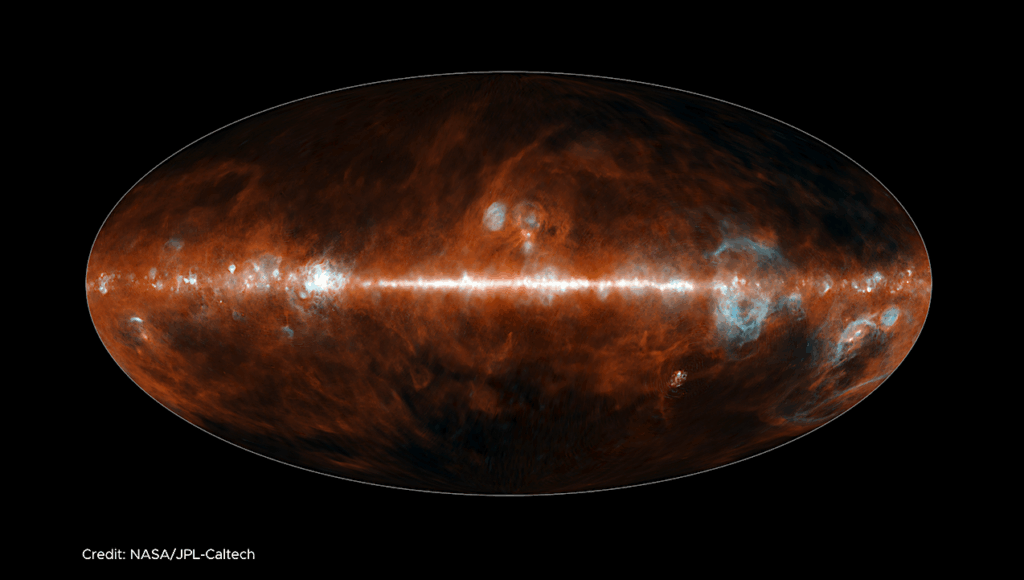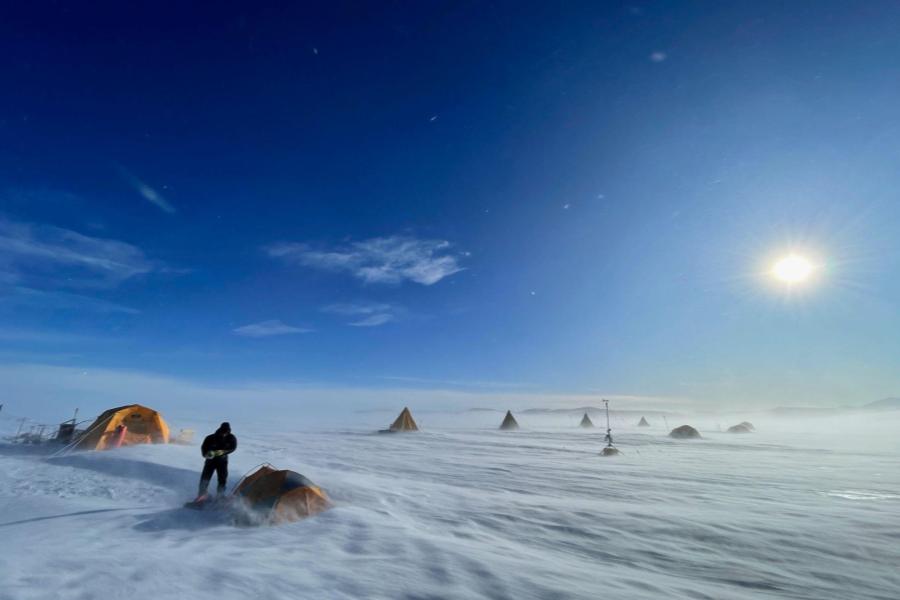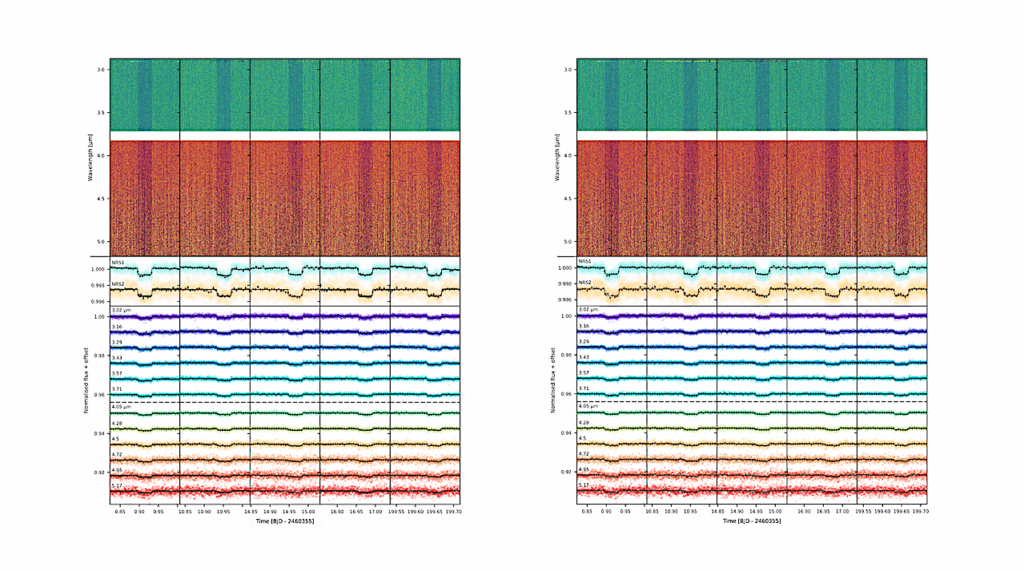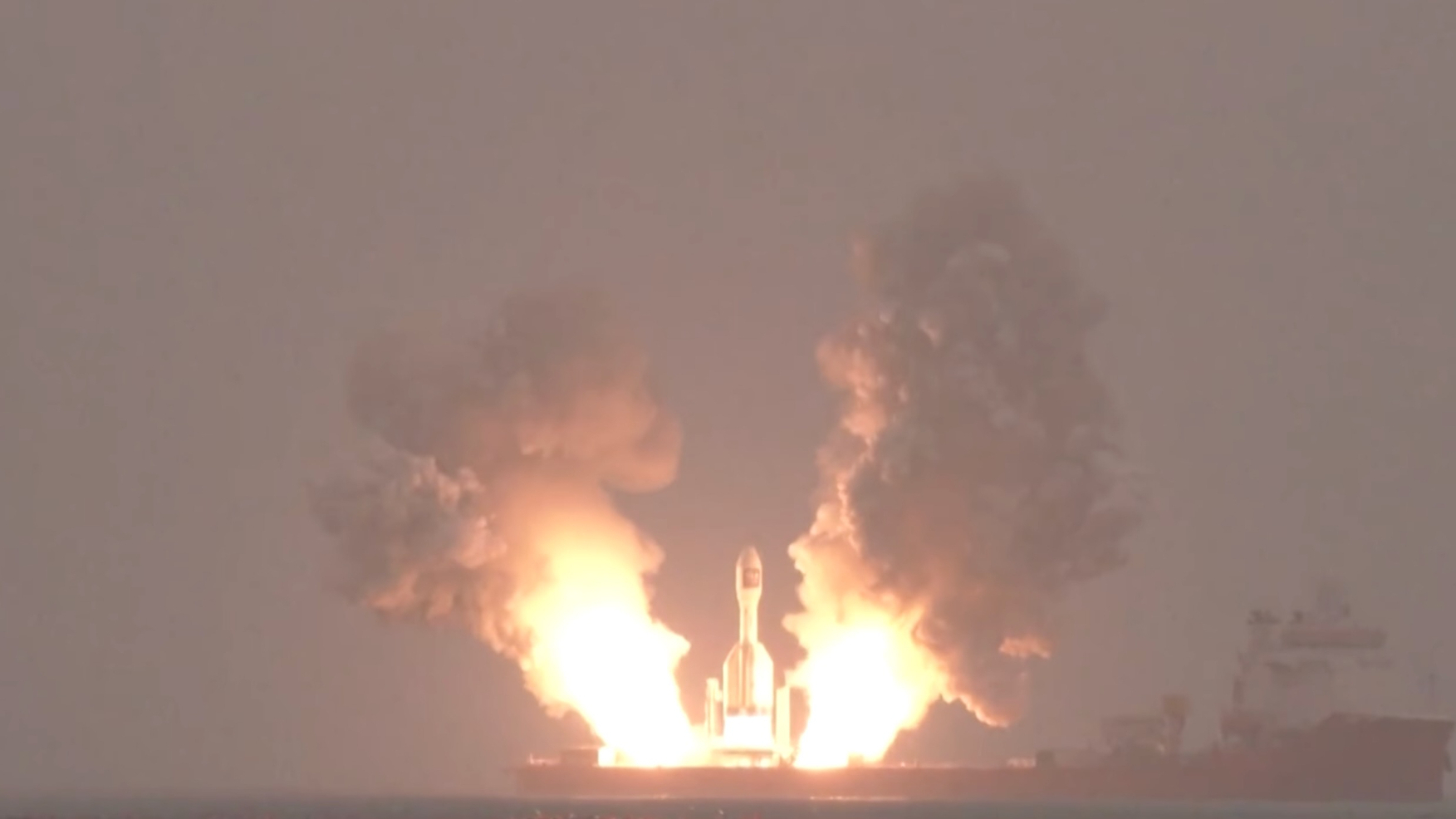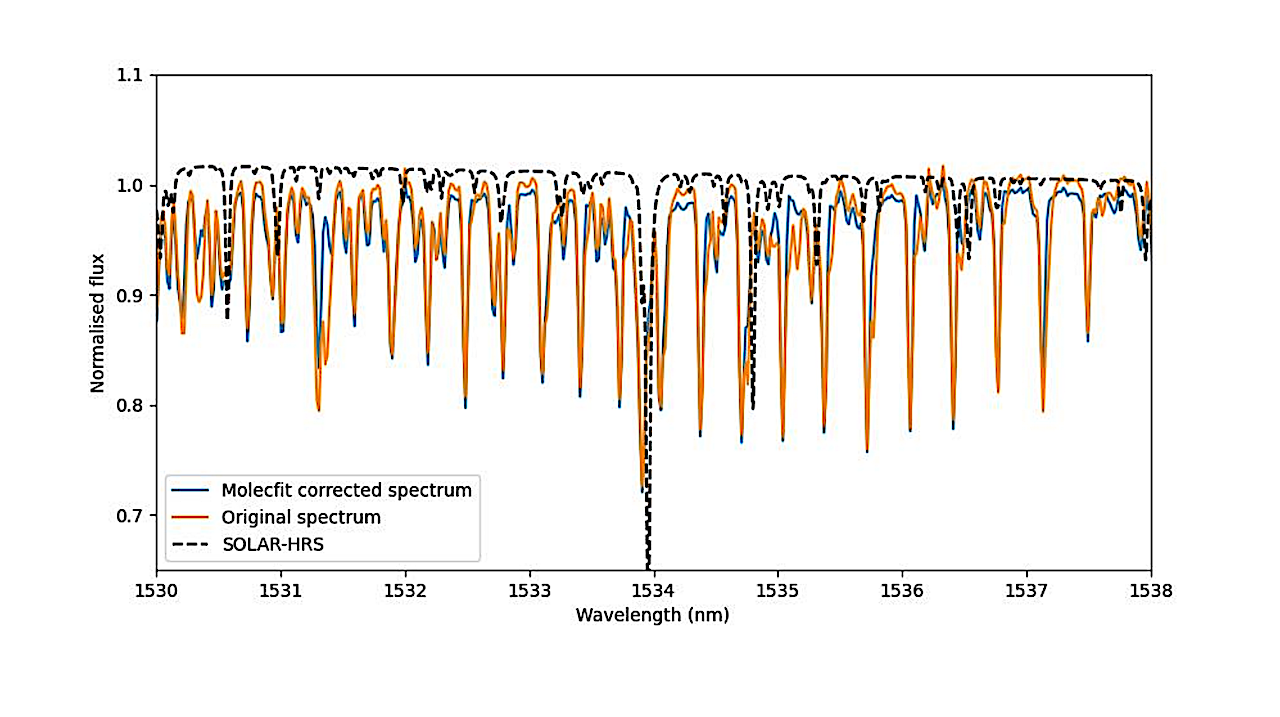Now Reading: The Survival Of Aromatic Molecules In Protoplanetary Disks
-
01
The Survival Of Aromatic Molecules In Protoplanetary Disks
The Survival Of Aromatic Molecules In Protoplanetary Disks
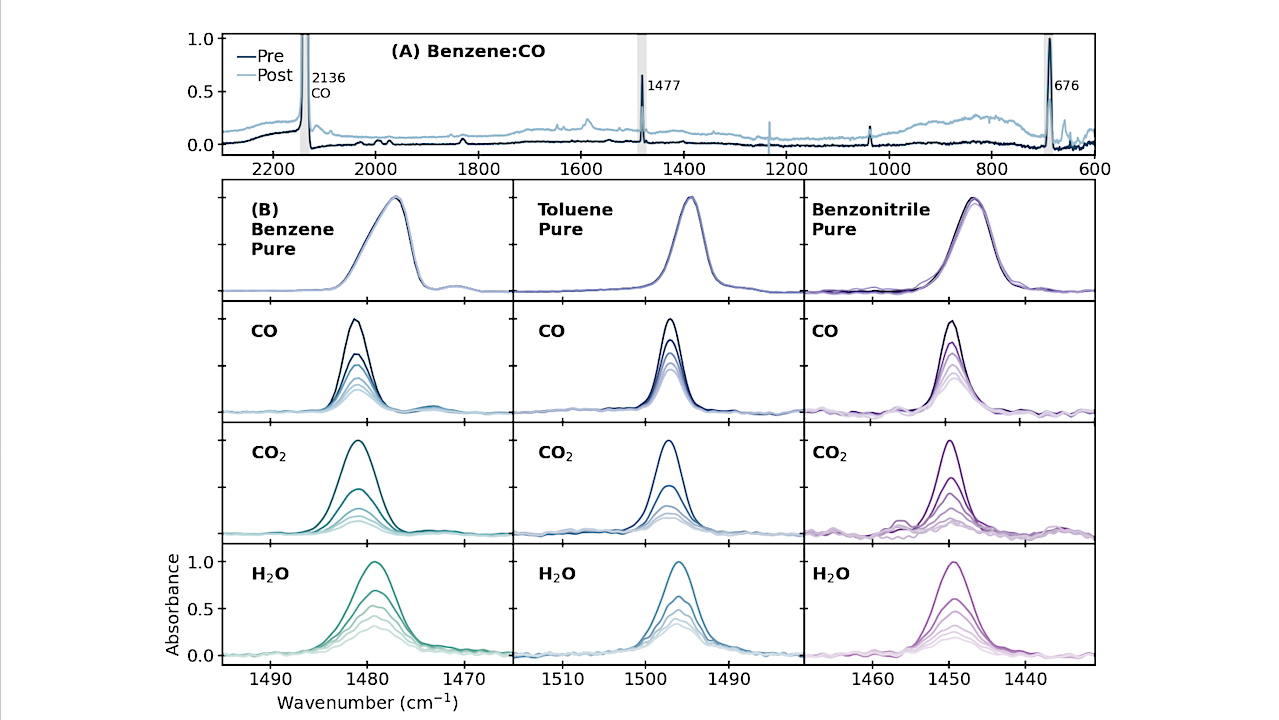

(A) Spectral variation of the benzene:CO mixture before and after photon exposure. The dark blue line corresponds to the IR spectra before photon exposure, and the lighter blue corresponds to the IR spectra of the benzene:CO ice after photon exposure. (B) Spectral variation of the main aromatic bands as a function of photon fluence, with lighter colors representing higher photon fluence. Different colors are used to identify benzene, toluene, and benzonitrile. Each ice was exposed to approximately the same photon fluence of ∼7 × 1017 photons cm−2 (Table 2). Unless explicitly indicated, all subpanels share the same axis scale. — astro-ph.IM
Aromaticity is a common chemical functionalities in bioactive molecules. In interstellar and circumstellar environments benzene and other small aromatics are considered the precursor for more complex prebiotic molecules and they have shown to potentially have rich ice-phase photochemistry.
The availability of small organic molecules in prebiotic networks depends on their photostability in astrophysical environments preceding planet formation, particularly during the protoplanetary disk stage, as the disk composition is linked to the chemical make-up of planets and planetesimals.
We study the ultraviolet (UV) photodestruction (120-160 nm) of five aromatic molecules in undiluted ices and, for selected cases, in astrophysically relevant ice matrices (H2O, CO, CO2). For each ice, we measure the destruction cross sections as a function of photon exposure.
In undiluted ices, aromatic molecules exhibit substantially lower photodestruction cross sections (sigma < 10-19 cm2) than aliphatic hydrocarbons, including cyclohexane, (sigma = 2.8-4×10-18 cm2). Furthermore, neither substituent nature nor size affects the aromatic stability in pure ices, suggesting that the strong intermolecular interactions among aromatic molecules provide protection against VUV exposure, even with small to mid-sized ring substituents.
In mixed ices, the photodestruction and reactivity of aromatic molecules (sigma = 2.5-6.1×10-18 cm2) increases by more than an order of magnitude, but are still lower than in the gas-phase. We attribute this to a weaker cage effect and matrix-specific interactions.
We use the experimental photodestruction cross sections to estimate the lifetime of aromatic molecules in protoplanetary disks, denileating the disks regions in which aromatic photochemistry is expected to be the most active.
Elettra L. Piacentino, Aurelia Balkanski, Jenny Calahan, Anna Fitzsimmons, Mahesh Rajappan, Karin I. Oberg
Subjects: Instrumentation and Methods for Astrophysics (astro-ph.IM); Earth and Planetary Astrophysics (astro-ph.EP); Chemical Physics (physics.chem-ph)
Cite as: arXiv:2510.09797 [astro-ph.IM] (or arXiv:2510.09797v1 [astro-ph.IM] for this version)
https://doi.org/10.48550/arXiv.2510.09797
Focus to learn more
Submission history
From: Elettra Piacentino
[v1] Fri, 10 Oct 2025 19:00:50 UTC (2,500 KB)
https://arxiv.org/abs/2510.09797
Astrobiology, Astrochemistry,
Stay Informed With the Latest & Most Important News
-
 01From Polymerization-Enabled Folding and Assembly to Chemical Evolution: Key Processes for Emergence of Functional Polymers in the Origin of Life
01From Polymerization-Enabled Folding and Assembly to Chemical Evolution: Key Processes for Emergence of Functional Polymers in the Origin of Life -
 02Panasonic Leica Summilux DG 15mm f/1.7 ASPH review
02Panasonic Leica Summilux DG 15mm f/1.7 ASPH review -
 03How New NASA, India Earth Satellite NISAR Will See Earth
03How New NASA, India Earth Satellite NISAR Will See Earth -
 04And Thus Begins A New Year For Life On Earth
04And Thus Begins A New Year For Life On Earth -
 05Astronomy Activation Ambassadors: A New Era
05Astronomy Activation Ambassadors: A New Era -
06SpaceX launch surge helps set new global launch record in 2024
-
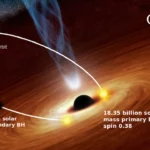 07Two Black Holes Observed Circling Each Other for the First Time
07Two Black Holes Observed Circling Each Other for the First Time












